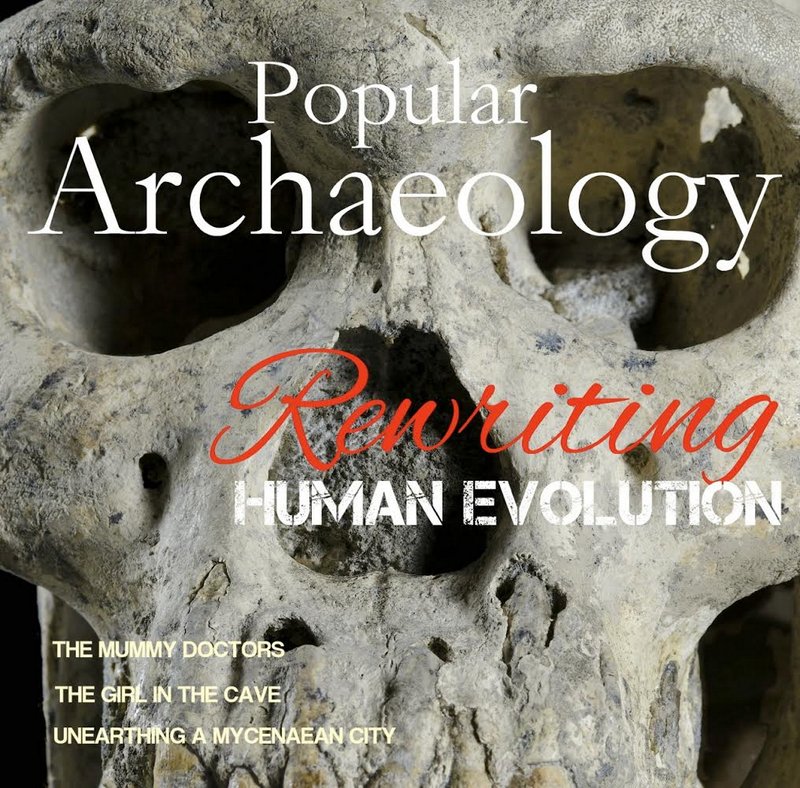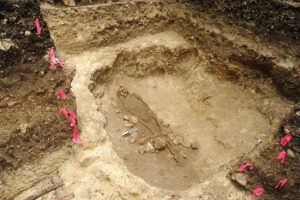
The transition from groups of mobile foragers to established sedentary communities in ancient Maya society may have involved groups of varying degrees of mobility gathering for public ceremonies and joint construction projects, according to a study conducted by Takeshi Inomata and an international team.
Since 2005, Inomata and colleagues have been conductiing archaeological investigations at the site of Ceibal, Guatemala, located in the Maya lowlands. They evaluated detailed stratigraphic and ceramic data, along with an analysis of radiocarbon dates, to develop a detailed, ‘high-resolution’ chronology of Ceibal, built around 950 BC, comparing the data with archaeological sequences in other parts of the Maya lowlands. In this way, they were able to develop a clearer picture of how a population landscape of mobile foraging groups transitioned to the centralized, urbanized Maya populations represented by the remains of the Classical Maya centers we know about today.
“A uniquely rich dataset obtained from the Maya site of Ceibal (or Seibal) suggests the possibility that groups with different levels of mobility gathered and collaborated for constructions and public ceremonies, which contrasts with the common assumption that sedentary and mobile groups maintained separate communities,” wrote Inomata, et al., in the recent report published in the Proceedings of the National Academy of Sciences.*
The authors found that inhabitants maintained ephemeral dwellings until around 700 BC, when durable dwelling construction began, likely to house the community’s elite. By 300 BC, practices of rebuilding durable homes in the same location and burying the dead beneath house floors had become common among Ceibal residents. Ceremonial complexes built during this period appear only in a small number of important communities in the Maya lowlands, however, suggesting that groups with varying levels of mobility gathered for rituals at ceremonial sites. The results suggest that interactions among diverse groups at such gatherings may have contributed to the development of sedentary communities in the Maya civilization, according to the authors.
“It is probable that public ceremonies, as well the construction of ceremonial complexes, provided opportunities for groups with different lifestyles to gather and collaborate,” concluded the authors in the report. “Such collective activities possibly played a central role in facilitating social integration among diverse participants and eventually, in spreading more sedentary ways of life.”*
_____________________________________
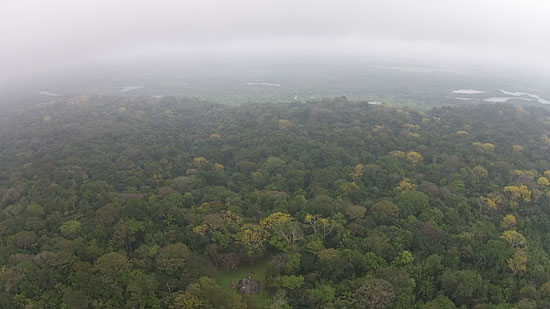 Aerial view of Ceibal, at bottom center. Courtesy of Tsuyoshi Haraguchi (Osaka City University, Osaka, Japan).
Aerial view of Ceibal, at bottom center. Courtesy of Tsuyoshi Haraguchi (Osaka City University, Osaka, Japan).
__________________________________________________
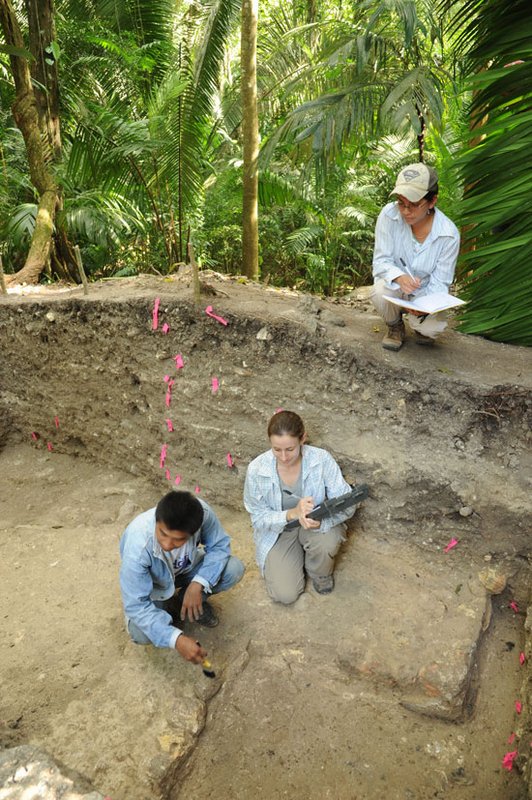 An early residential structure, circa 500 BC, found in the Karinel Group at Ceibal. Courtesy of Tsuyoshi Haraguchi (Osaka City University, Osaka, Japan).
An early residential structure, circa 500 BC, found in the Karinel Group at Ceibal. Courtesy of Tsuyoshi Haraguchi (Osaka City University, Osaka, Japan).
_______________________________________________
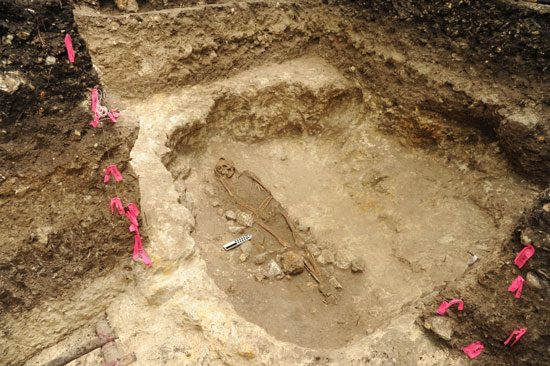 An early burial, circa 500 BC, placed in an underground cavity at Ceibal. Courtesy of Tsuyoshi Haraguchi (Osaka City University, Osaka, Japan).
An early burial, circa 500 BC, placed in an underground cavity at Ceibal. Courtesy of Tsuyoshi Haraguchi (Osaka City University, Osaka, Japan).
_______________________________________________
*“Development of sedentary communities in the Maya lowlands: Coexisting mobile groups and public ceremonies at Ceibal, Guatemala,” by Takeshi Inomata et al.
Source: The subject report, with a summary and some adpatation and editing of a related PNAS press release.
__________________________________________________
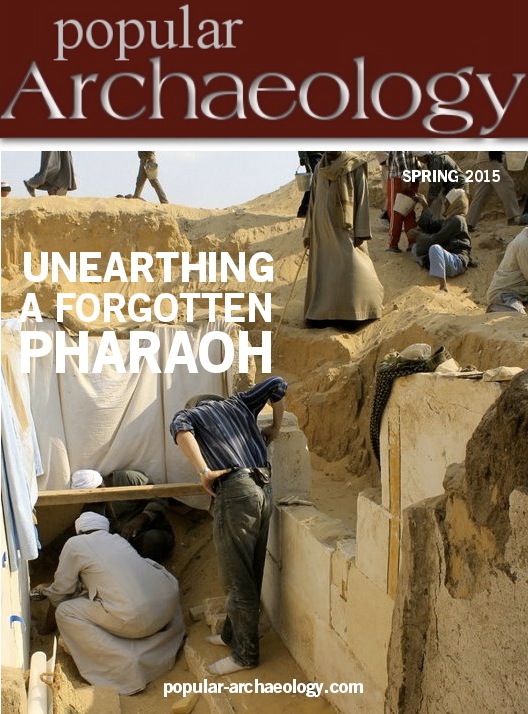 Read about the most fascinating discoveries with a super-saver subscription to Popular Archaeology Magazine. Find out what Popular Archaeology Magazine is all about.
Read about the most fascinating discoveries with a super-saver subscription to Popular Archaeology Magazine. Find out what Popular Archaeology Magazine is all about.
Recently released!
A special new premium quality print edition of Popular Archaeology Magazine. A beautiful volume for the coffee table.
Travel and learn with Far Horizons.
____________________________________________
 Popular Archaeology’s annual Discovery Edition eBook is a selection of the best stories published in Popular Archaeology Magazine in past issues, with an emphasis on some of the most significant, groundbreaking, or fascinating discoveries in the fields of archaeology and paleoanthropology and related fields. At least some of the articles have been updated or revised specifically for the Discovery edition. We can confidently say that there is no other single issue of an archaeology-related magazine, paper print or online, that contains as much major feature article content as this one. The latest issue, volume 2, has just been released. Go to the Discovery edition page for more information.
Popular Archaeology’s annual Discovery Edition eBook is a selection of the best stories published in Popular Archaeology Magazine in past issues, with an emphasis on some of the most significant, groundbreaking, or fascinating discoveries in the fields of archaeology and paleoanthropology and related fields. At least some of the articles have been updated or revised specifically for the Discovery edition. We can confidently say that there is no other single issue of an archaeology-related magazine, paper print or online, that contains as much major feature article content as this one. The latest issue, volume 2, has just been released. Go to the Discovery edition page for more information.

